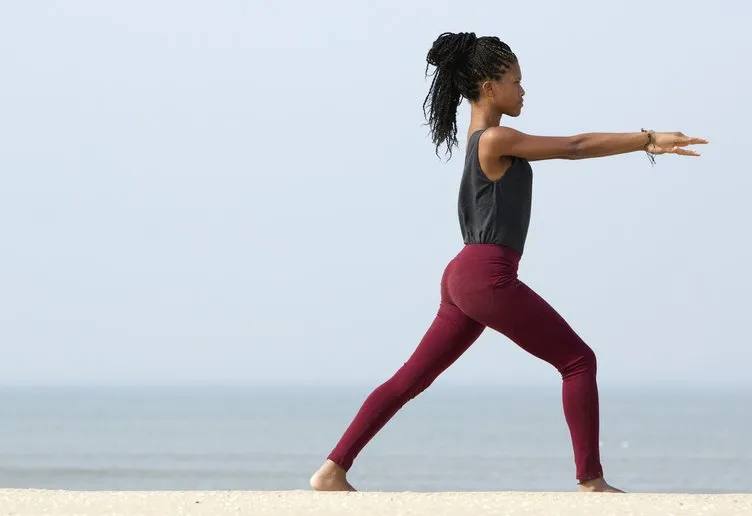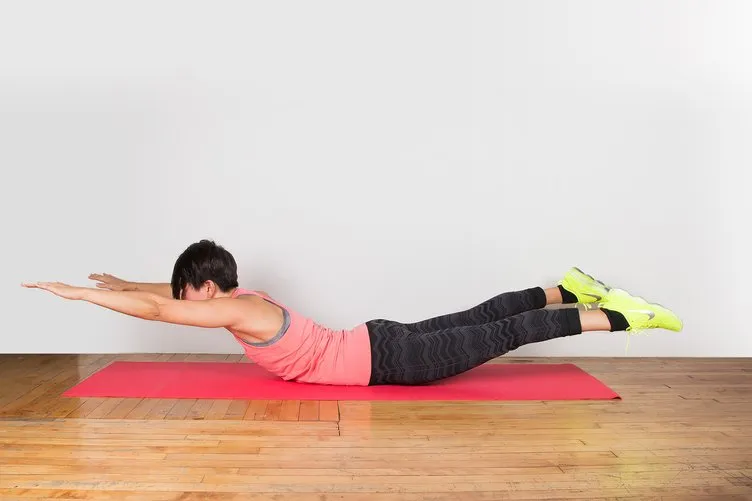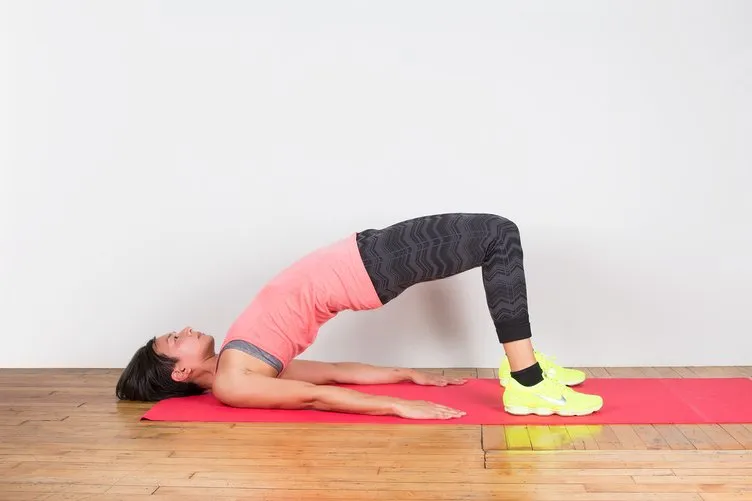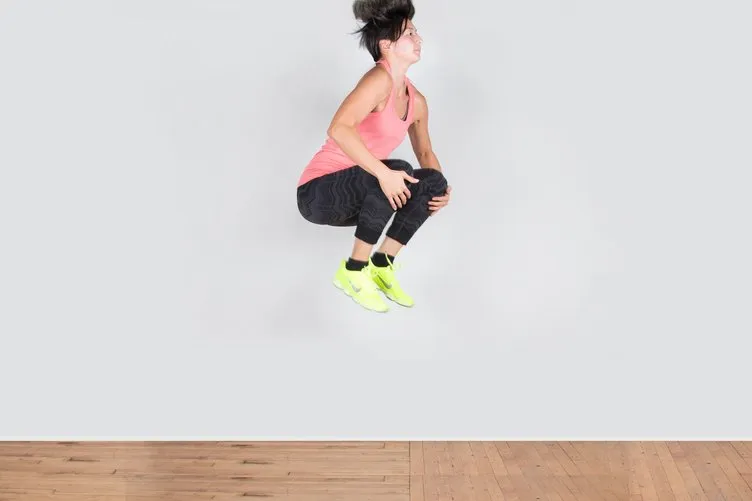Getting fit doesn’t have to be complicated. Simple bodyweight exercises are a great way for achieving gains in strength, flexibility, and overall health. Best of all, they don’t cost a thing and you can usually do them just about anywhere. Still not convinced? Well. Here’s a list of exercises and why they should be a key component to your workout regime. We use them all the time with our clients, mixing up weight training and bodyweight to keep the body working hard. All you need to know is how many of each you should be doing and how often.
Why Bodyweight Training Is the Best
- It’s a super-efficient workout. Research suggests high-output, bodyweight-based exercises like plyometrics yield awesome fitness gains in short durations. Since there’s no equipment involved, bodyweight workouts make it easy to transition from one move to the next with little rest. And you’ve probably already heard that those short-but-intense workout can yield major results.
- It can combine cardio and strength training Performing quick cardio sessions (such as 60 seconds of burpessa or high-knees) between strength movements (such as a set of push ups or lunges) will keep the heart pumping while still encouraging muscle and strength development.
- You can burn fat—fast. Just a few minutes of a bodyweight circuits can have a major impact on the body’s metabolism. If you’ve ever heard of the ‘afterburn’ or EPOC effect, you know that even when your workout is over, your body can still be revved for hours to come.
- At any fitness level, it’s challenging. Bodyweight exercises are great because they’re easily modified to challenge anyone. Adding extra reps, performing the exercises faster or super slowly, taking shorter breaks, or adding a powerful, dynamic movement (push-up with a clap anyone?) are just a few ways to make the simplest workout tougher. And with each added modification, your progress is obvious.
- You’ll gain core strength. Your core is more than just six-pack abs. There are at least 29 make up the trunk of the body, and many simple bodyweight movements can be used to make all of them work. Such exercises won’t just give you tighter abs, you’ll also gain better posture, relieve lower back stress, and improve overall performance.
- It can increase your flexibility. Not everyone who does regular resistance training has to end up with tight muscles and inflexible joints. Bodyweight training can go hand-in-hand with building strength and flexibility. Completing bodyweight exercises through a full range of motion ensures your joints are moving freely. Plus, it can lead to improved posture and might reduce the chance of exercise-related injury. Yoga is another great way to improve flexibility while also significantly improving strength.
- There’s never an excuse to not workout. Ask someone why they don’t exercise, and chances are they have “no time” or it’s “inconvenient.” Well, bodyweight exercises eliminate those common obstacles. When you only need a little space, it’s easy to squeeze in workouts wherever you are. Exercising without equipment can also be used as a stress buster whether you’re working at home or on the road.
- You’ll achieve better balance. When it comes to this type of training, sometimes increasing resistance means increasing balance, too. For example, a traditional squat can be progressed by changing to a single leg squat, making this a really functional movement like that can improve balance through increased body awareness and control.
- You’ll never get bored. It can be easy to get stuck in a workout rut of treadmills, bicep curls, lat pull-downs, and bench presses. That’s why bodyweight training can be so refreshing: There are countless exercise variations that can spice up any workout routine. Working with a variety of exercises not only relieves boredom, it can also help break training plateaus and spark further progress.
- Mixing up your workout is easy. Indoor excercise isn’t for everyone. Luckily you can perform bodyweight moves inside or outdoors, alone or with a group of friends. Think about adding some strength moves to your next park run, or finishing a swim session with a quick bodyweight circuit to keep things interesting.
- It can help with injury prevention. Injury is one of the main reasons people stop working out, so preventing those aches and pains should be a big priority. Bodyweight exercises are generally safe for any exerciser regardless of experience, age, or fitness level. Many simple bodyweight movements can actually be an effective option for rehabilitation, even for those with significant impairments. (But get some advice first!)
- You’ll see results. Bodyweight exercises get results partly because they involve compound movements—meaning numerous joints and muscles are engaged in each move. Compound exercises such as push-ups and lunges have been shown to be extremely effective for strength gains and performance improvements. And research shows improved core strength translates to improved strength gains throughout the entire body
While there’s no universal “best” way to exercise for everyone, bodyweight movements offer lots of benefits, especially if you’re new to resistance training. Whether you’re at home, at the gym, or even in a hotel room, bodyweight training is one tool that can be helpful to all levels in every setting.
Here’s some of our favourite Bodyweight Exercises we like to regularly include in our client’s workouts and these are a simple, effective way to improve balance, flexibility, and strength without any extra machinery or extra equipment.
Inchworm. Stand up tall with the legs straight, and let those fingertips hit the floor. Keeping the legs straight (but not locked!), slowly lower the torso toward the floor, and then walk the hands forward. Once in a push-up position, start taking tiny steps so the feet meet the hands. Continue bugging out for 4-6 reps.
Tuck Jump. Standing with the knees slightly bent, jump up as high as possible and bring the knees in toward the chest while extending the arms straight out. Land with the knees slightly bent and quickly jump again!
Bear Crawl. Embrace that inner grizzly. Starting on the hands and knees, rise up onto the toes, tighten the core, and slowly reach forward with the right arm and right knee, followed by the left side. Continue the crawl for 8-10 reps.
Mountain Climber. Starting on your hands and knees, bring the left foot forward directly under the chest while straightening the right leg. Keeping the hands on the ground and core tight, jump and switch legs. The left leg should now be extended behind the body with the right knee forward.
Burpees. One of the most effective full-body exercises around, this one starts out in a low squat position with hands on the floor. Next, kick the feet back to a push-up position, complete one push-up, then immediately return the feet to the squat position. Leap up as high as possible before squatting and moving back into the push-up portion of the show.
Plank. Lie face down with forearms on the floor and hands clasped. Extend the legs behind the body and rise up on the toes. Keeping the back straight, hips and shoulders level, tighten the core and hold the position for 30-60 seconds (or as long as you can hang).
Wall Sit. Who needs a chair when there’s a wall? Slowly slide your back down a wall until the thighs are parallel to the ground. Make sure the knees are directly above the ankles and keep the back straight. Go for 60 seconds per set (or however long it takes to turn those legs to jelly).
Lunge. Stand with the hands on the hips and feet hip-width apart. Step your right leg forward and slowly lower body until left (back) knee is close to or touching the floor and bent at least 90 degrees. Return to the starting position and repeat on the other side. Try stepping back into the lunge for a different variation.
Lunge Jump. Stand with the feet together and lunge forward with the right foot. Jump straight up, propelling the arms forward while keeping the elbows bent. While in the air, switch legs and land in a lunge with the opposite leg forward. Repeat and continue switching legs. Try to do 10!
Squat. Stand with the feet parallel or turned out 15 degrees—whatever is most comfortable. Slowly start to crouch by bending the hips and knees until the thighs are at least parallel to the floor. Make sure the heels do not rise off the floor. Press through the heels to return to a standing position.
Step-Up. This may be self-explanatory, but just in case—find a step or bench, and place the right foot on the elevated surface. Step up until the right leg is straight and foot is fully on the step, then return to start.
Standard Push-Up. With hands shoulder-width apart, keep the feet flexed at hip distance, and tighten the core. Bend the elbows until the chest reaches the ground, and then push back up (make sure to keep the elbows tucked close to the body).
Superman. Lie face down with arms and legs extended. Keeping the torso as still as possible, simultaneously raise the arms and legs to form a small curve in the body.
Shoulder Stabilisation Series (Y, T, W). OK, it may look crazy, but stay with us. Lie down on your stomach with arms extended overhead and palms facing each other. Move the arms into each letter formation. (Singing YMCA IS OPTIOANL!!.)
Side Plank. Roll to the side and come up on one foot and elbow. Make sure the hips are lifted and the core is engaged, and hang tight for 30-60 seconds (or as long as you can stomach!).
Glute (& Shoulder) Bridge. Lie on your back with the knees bent and feet hip-width apart. Place arms at your side and lift up the spine and hips. Only the head, feet, arms, and shoulders should be on the ground. Then lift one leg upwards, keeping the core tight. Slowly bring the leg back down then lift back up.
There you have it; all the reasons why Bodyweight Exercises are good for you and some exercises for you to try; now get cracking!





